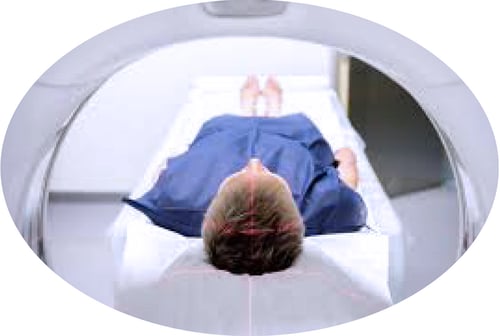Quite often the terms CT Scanner and CT Simulator are used interchangeably. But are they really the same thing? Well, yes and no.
A CT Scanner produces detailed images of structures inside the body. These can include organs, blood vessels and bones. CT scans can be used to diagnose conditions, including problems with blood flow, stroke, cancer, injuries to internal organs and damage to bones. It uses a series of X-rays and a computer to produce a 3D image of bones and soft tissue. It’s a painless, noninvasive way to diagnose conditions.
A CT Simulator is a real-time, CT-linked, 3D treatment planning system. It consists of a CT Scanner, and a lot more. It also includes a multi-image display, a treatment planning device that has real-time visual optimization and a laser beam projector. A CT simulation procedure is a process that’s performed before a radiotherapy treatment to determine the size, shape and location of a tumor. A radiotherapy team and oncologist can then plan a custom-made treatment for a patient.
The CT Simulator is designed for CT sim procedures with an 80 cm or larger bore, a flat table top, laser positioning devices and virtual simulation imaging software.
There are three phases to a CT Simulation Procedure:
- Creating an immobilization device: The patient must remain still during a radiation treatment, so an immobilization device is necessary to make sure the tumor can be targeted to millimeters in order to preserve the healthy tissue. These devices are custom made to fit over areas of the body, like a head, neck or pelvic region.
- Take images of the tumor while the oncology patient is in position. The CT sim procedure mimics the position of the patient in the linear accelerator in all aspects—except when delivering the therapeutic beam.
- Targeting marks are placed on the patient’s body for localization of the radiation beam. The marks aren’t permanent but do have to remain on the patient until the last day of radiation therapy.
Looking for a CT Scanner?
Talk to the experts at Atlantis Worldwide. There are lots of options on the secondary market, which delivers the performance you want at a much lower price point. We’ve been helping healthcare facilities find the perfect medical imaging equipment for 30 years and would love to help you.
Follow Atlantis Worldwide on Twitter: @AtlantisLLC
Other blogs you may have missed:
- Is Your CT Tube About To Fail?
- Installing a CT Scanner: What You Need to Know
- Should your business lease or buy medical imaging equipment?
- What Radiographers Have To Say About COVID-19
- Free CT Resources
Meet the author: Vikki Harmonay



